Visitors ambled around the gallery in Finley Hall at Montclair State University, waiting for the exhibition to start. As they gazed upon the numerous pieces of art on the walls, the main attraction lay in the center of the room: a collection of bottles with paper boats inside, all on top of a pile of black mulch.
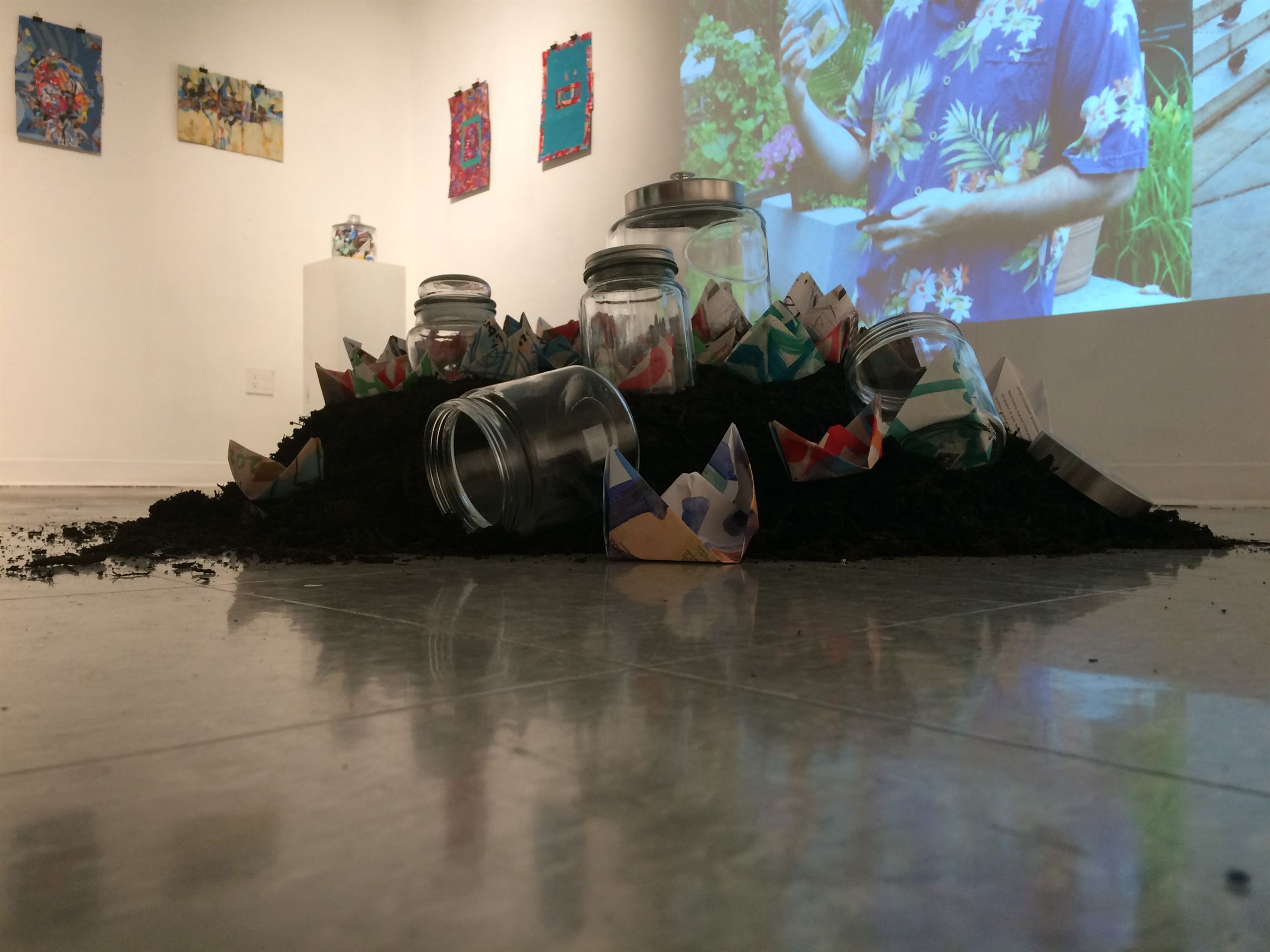
Piled on top of the black mulch are some of the bottles that Bhowmik had left in places around the New York City area and beyond.
Sal DiMaggio | The Montclarion
Dr. Ritwij Bhowmik, associate professor for the department of art and design and a visiting Fulbright Fellow, had spent 36 weeks traveling to different landmarks to leave one of those bottles in a different location each week. Those locations included Ellis Island, the Statue of Liberty, the Lincoln Memorial, the Sept. 11 memorial and even one at Montclair State.
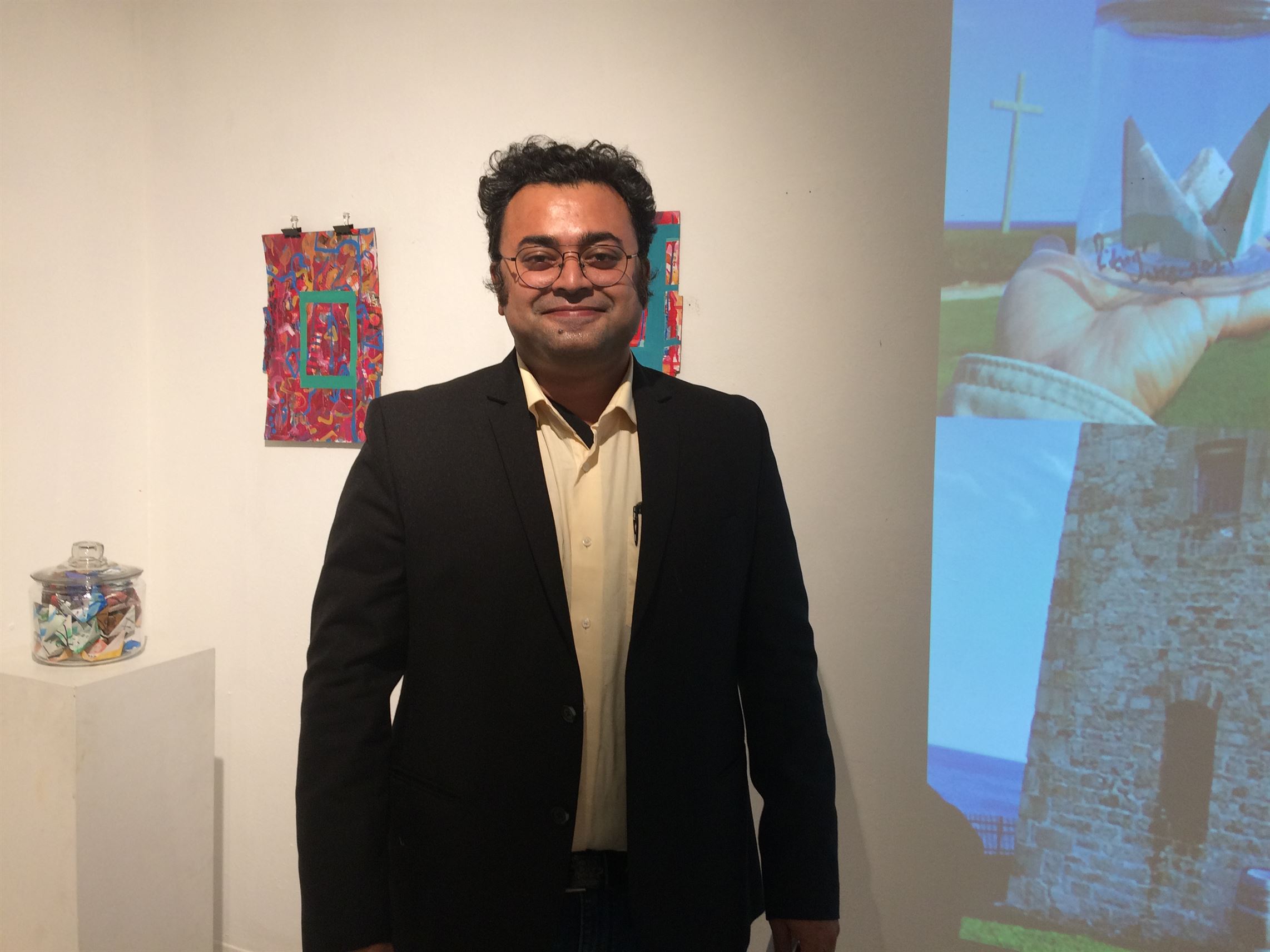
Dr. Ritwij Bhowmik spread a message about spreading art through unconventional means and his view on racial profiling as someone from outside the United States.
Sal DiMaggio | The Montclarion
On Dec. 1, 2021, Bhowmik explained what the pile of bottles in the center of the room meant. He designed this experiment to give art to random strangers, to reach a broader audience than ones who actively seek out art.
“This is a way of connecting with the local audience and giving back… This is getting the art out of the conventional boundaries, like [the] gallery space or museum, and then sharing it with the audience who are reluctant to visit the museum and gallery,” Bhowmik said.
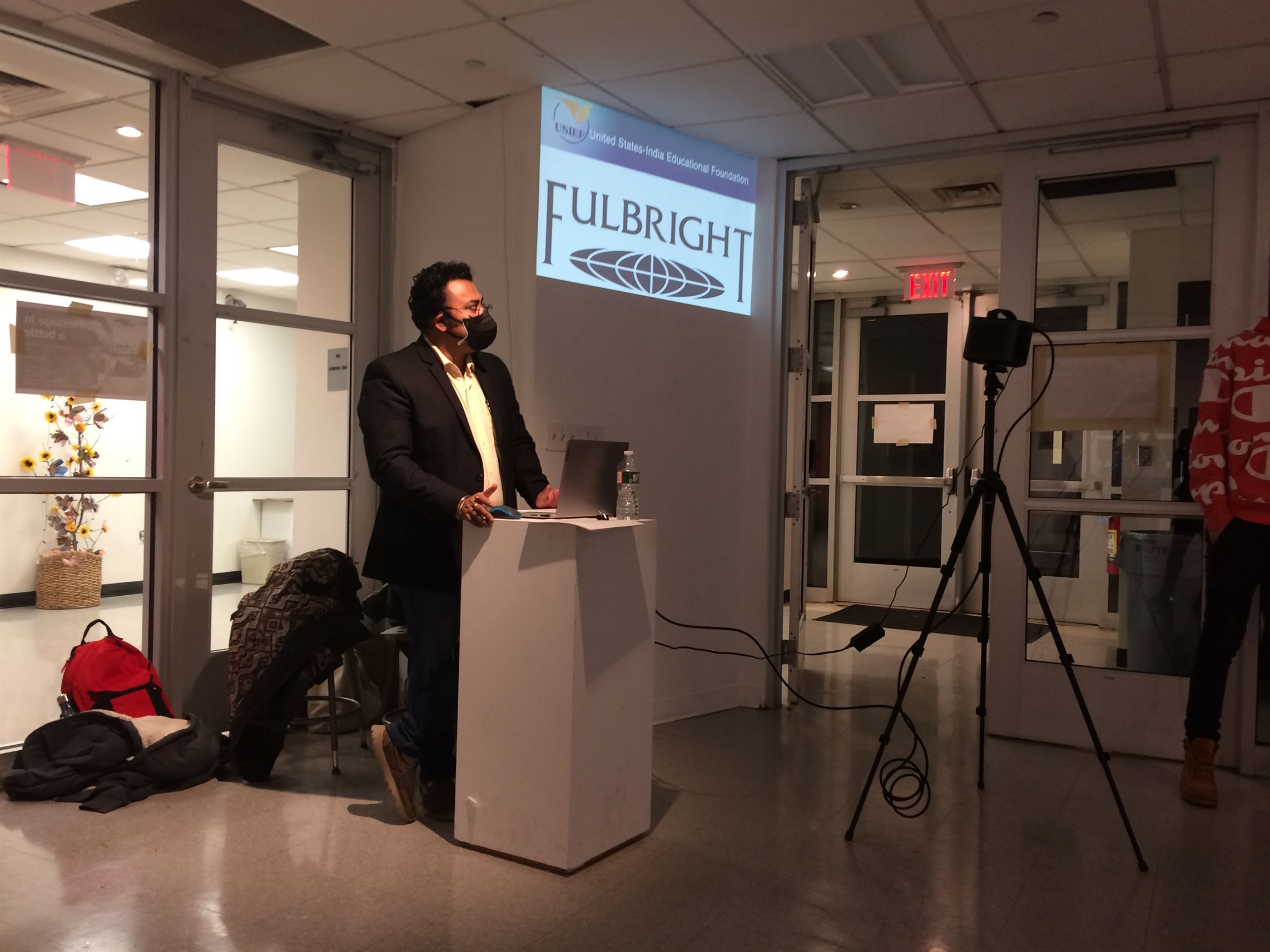
Bhowmik discusses his time in the United States as a Fulbright Fellow during his exhibition.
Sal DiMaggio | The Montclarion
Bhowmik’s Bengali origins inspired the project, as it is based on a poem from Bengal, India. The poem, “Paper Boats” by Rabindranath Tagore, tells the story of the narrator, presumably a child, who sends paper boats with his name and village on them in the hopes that a stranger finds them, much like how Bhowmik hopes strangers find his bottles.
However, Bhowmik’s project was hindered by the coronavirus (COVID-19) pandemic. Because of health concerns, he could only travel so far. Bhowmik’s colleague and deputy chair for the department of art and design, Andrew Atkinson, described the impact the pandemic had on Bhowmik’s project.
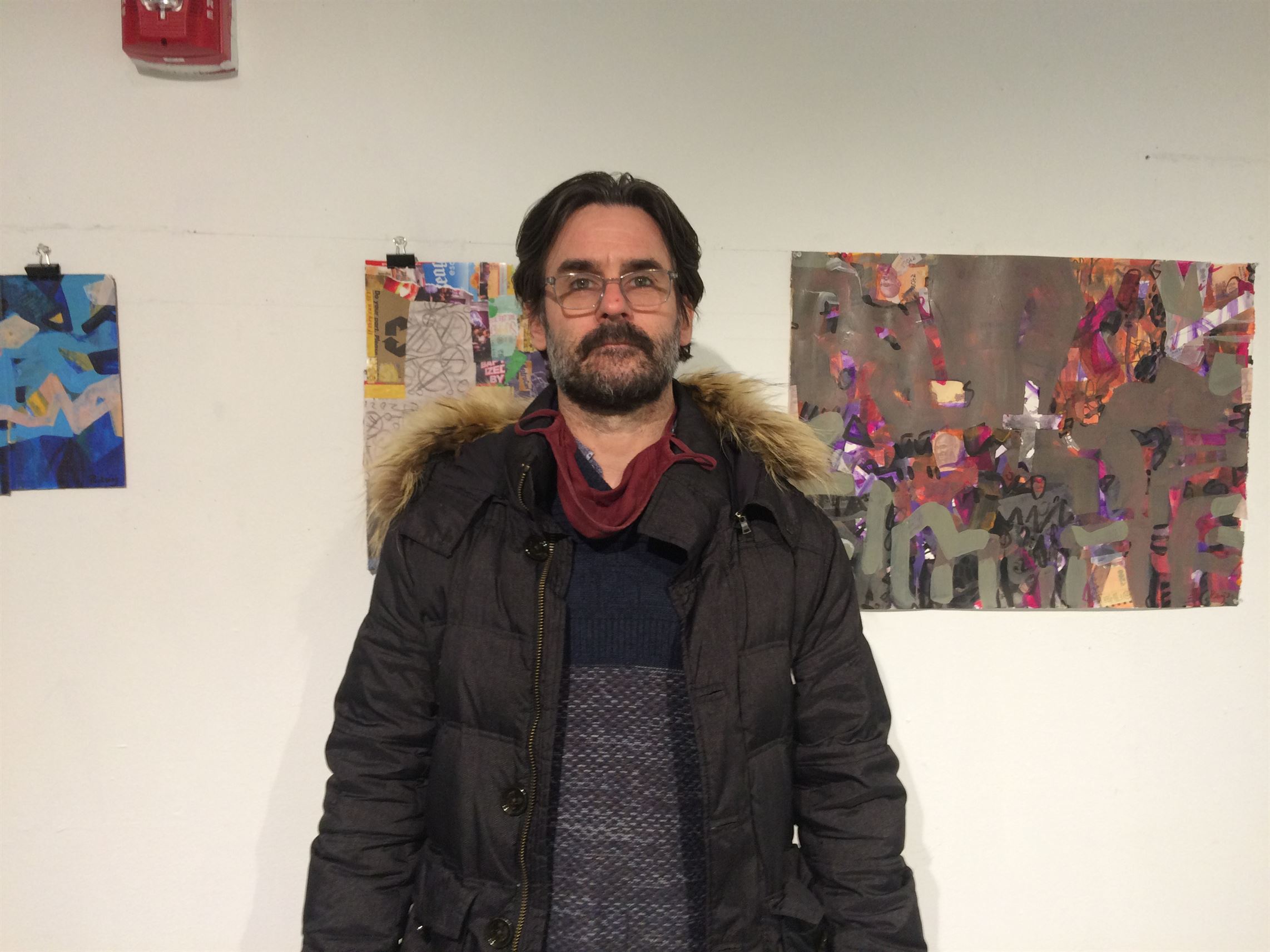
Andrew Atkinson was one of Bhowmik’s colleagues during Bhowmik’s time at Montclair State.
Sal DiMaggio | The Montclarion
“I felt the sort of tragedy in this project, which is based on travel and movement, [is that it] happened dead in the middle of COVID-19,” Atkinson said. “[This] obviously restricted his movements and left him unable to do a lot of things, which he’s here to do. So, I think it added another layer to it.”
Still, Bhowmik traveled to many iconic places for his project. But, his last one was by far the most meaningful: the Sept. 11 memorial in New York City, New York. This was no accident: Bhowmik wanted to make a statement on how brown-skinned people have been viewed since the 9/11 attacks in 2001.
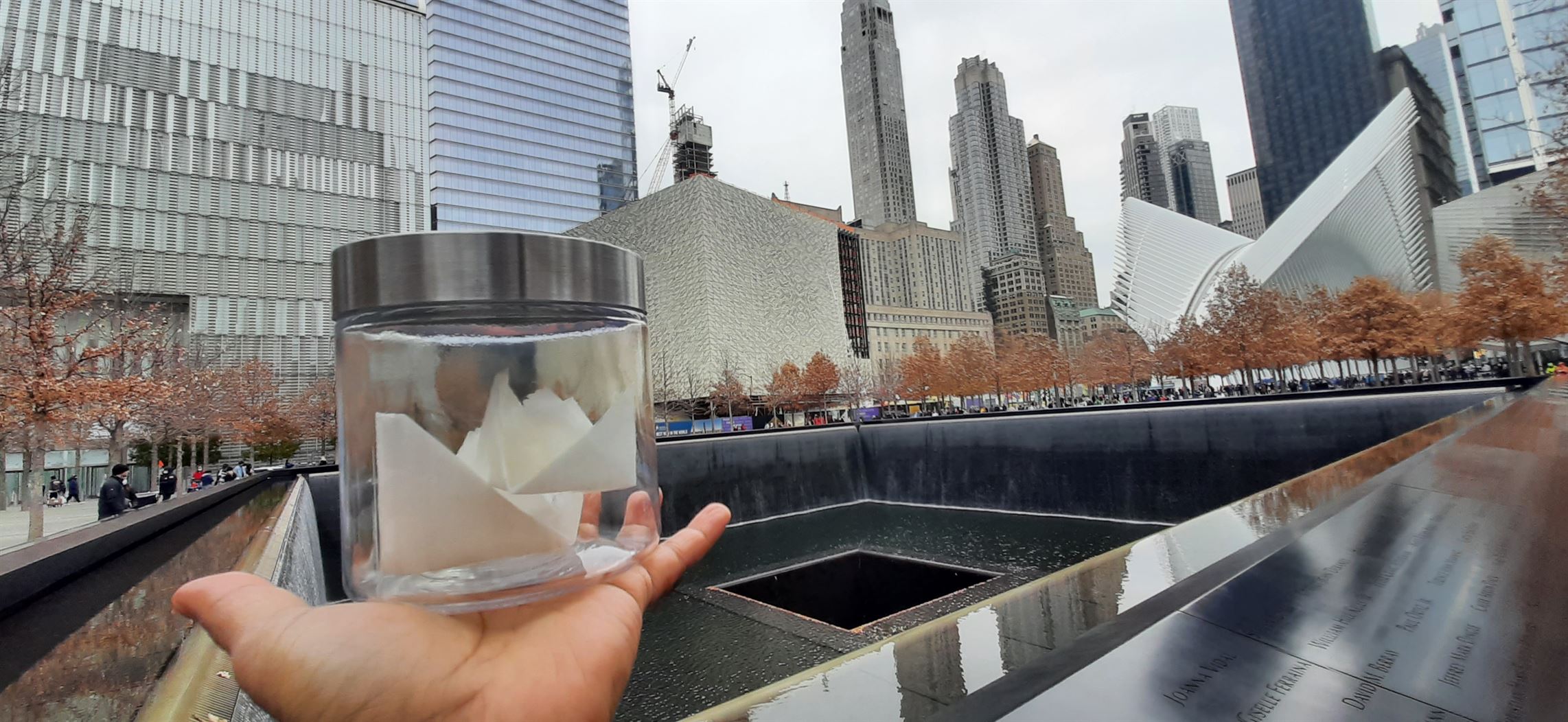
Bhowmik chose to leave one of his bottles at the Sept. 11 memorial.
Photo courtesy of Dr. Ritwik Bhowmik
“This thing was put into our mind that as being a brown-skinned person going into [the] U.S. and then placing something, people will look towards you with a lot of suspicions, that you are maybe carrying a bomb,” Bhowmik said. “So, I wanted to know more about that, whether it is something which you are thinking, which is not there, [but] probably is a creation or is propaganda by the media.”
Another one of Bhowmik’s colleagues, Christopher Kaczmarek, the program coordinator for visual arts, said realizing what Bhowmik was doing made him concerned for the Fulbright Fellow’s safety.
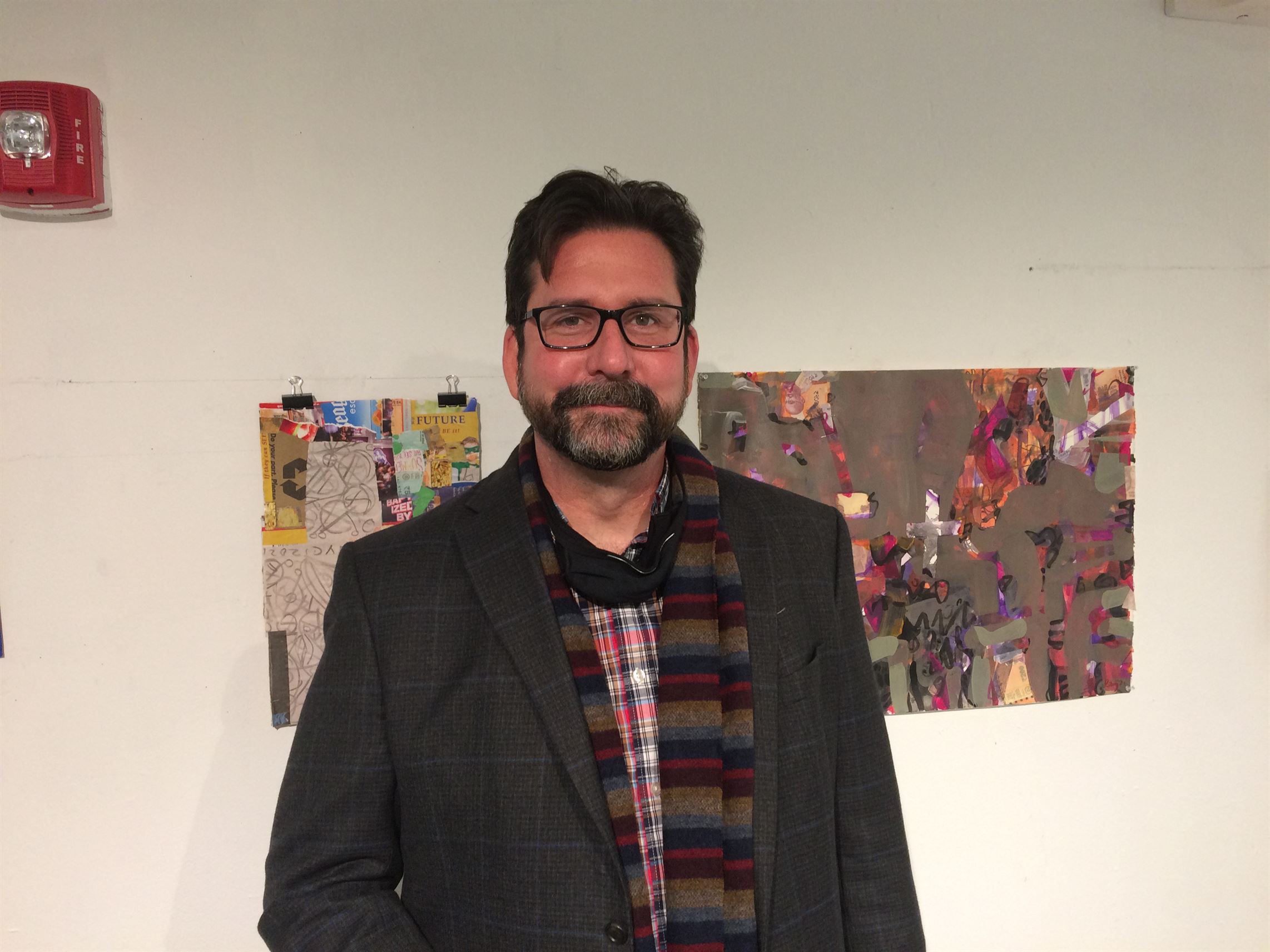
Christopher Kaczmarek watched as Bhowmik made an impact with his art experiment.
Sal DiMaggio | The Montclarion
“It’s odd how as a middle-aged white male, I don’t even think about this until I’m observing,” Kaczmarek said. “It was a really powerful moment and it’s not something that’s necessarily embedded in the work itself and accessible through the work itself. But it’s something that, through being adjacent to him as it was, as he was enacting these actions really drove something home.”
Bhowmik’s time as an associate professor at Montclair State ended on Dec. 31, 2021. He plans to go back to India, where he is an associate professor at the Indian Institute of Technology in Kanpur, and continue his exploration of art.



